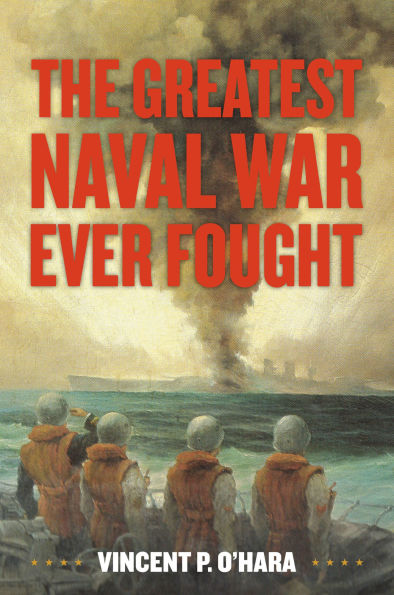The greatest naval conflict in history occurred during World War II from 1939 to 1945. Most people are familiar with the famous Battle of the Atlantic and epic naval engagements in the Pacific like Midway and Leyte Gulf, all of which receive ample coverage in this panoramic work. However, author Vince O’Hara offers a truly global perspective of World War II at sea that captures every aspect of a vast naval conflict that involved dozens of nations, more than 15,000 ships, and 43.7 million tons of shipping. Approximately 570,000 lives were lost at sea in those six years.
Here, the naval action begins in the Baltic Sea before dawn on September 1, 1939, when a German battleship opened fire on Polish troops barricaded in a fortress in the port city of Danzig, Poland. Over the ensuing nine months, the conflict spread into Great Britain’s home waters of the North Sea, the English Channel, and the eastern Atlantic. One of the most remarkable naval achievements of the war occurred in 1940 during the German invasion of Norway. The Kriegsmarine’s successful attack in the face of immensely superior Allied naval forces was the war’s first large-scale amphibious operation. As naval activities in Europe expanded into the Mediterranean, the war in the Pacific exploded with the Japanese attack on Pearl Harbor in December 1941. That assault led to a series of critical naval battles between Japan and the United States, including Wake Island, Coral Sea, Midway, and Guadalcanal.
O’Hara not only deftly examines all the major naval contests in the European and Pacific theaters, but also offers detailed analysis of secondary navies such as France, Italy, and the Soviet Union. He explores little-known, smaller engagements such as the campaigns between Thailand and France or Perú and Ecuador. O’Hara connects this broad range of naval action by focusing on recurring themes of technological innovation, command and control, logistics, and intelligence. He demonstrates that there was more than one path to winning sea power and that the most important naval platforms to emerge from the war were the oiler, the Landing Ship Tank (LST), and the Liberty ship—not the aircraft carrier, the submarine, or the battleship. O’Hara makes clear to readers that the impact of the naval battles won by the Allies still reverberates today.
The greatest naval conflict in history occurred during World War II from 1939 to 1945. Most people are familiar with the famous Battle of the Atlantic and epic naval engagements in the Pacific like Midway and Leyte Gulf, all of which receive ample coverage in this panoramic work. However, author Vince O’Hara offers a truly global perspective of World War II at sea that captures every aspect of a vast naval conflict that involved dozens of nations, more than 15,000 ships, and 43.7 million tons of shipping. Approximately 570,000 lives were lost at sea in those six years.
Here, the naval action begins in the Baltic Sea before dawn on September 1, 1939, when a German battleship opened fire on Polish troops barricaded in a fortress in the port city of Danzig, Poland. Over the ensuing nine months, the conflict spread into Great Britain’s home waters of the North Sea, the English Channel, and the eastern Atlantic. One of the most remarkable naval achievements of the war occurred in 1940 during the German invasion of Norway. The Kriegsmarine’s successful attack in the face of immensely superior Allied naval forces was the war’s first large-scale amphibious operation. As naval activities in Europe expanded into the Mediterranean, the war in the Pacific exploded with the Japanese attack on Pearl Harbor in December 1941. That assault led to a series of critical naval battles between Japan and the United States, including Wake Island, Coral Sea, Midway, and Guadalcanal.
O’Hara not only deftly examines all the major naval contests in the European and Pacific theaters, but also offers detailed analysis of secondary navies such as France, Italy, and the Soviet Union. He explores little-known, smaller engagements such as the campaigns between Thailand and France or Perú and Ecuador. O’Hara connects this broad range of naval action by focusing on recurring themes of technological innovation, command and control, logistics, and intelligence. He demonstrates that there was more than one path to winning sea power and that the most important naval platforms to emerge from the war were the oiler, the Landing Ship Tank (LST), and the Liberty ship—not the aircraft carrier, the submarine, or the battleship. O’Hara makes clear to readers that the impact of the naval battles won by the Allies still reverberates today.

The Greatest Naval War Ever Fought
440
The Greatest Naval War Ever Fought
440eBook (First Edition)
Related collections and offers

Product Details
| ISBN-13: | 9781682479643 |
|---|---|
| Publisher: | Naval Institute Press |
| Publication date: | 10/14/2025 |
| Sold by: | Barnes & Noble |
| Format: | eBook |
| Pages: | 440 |
